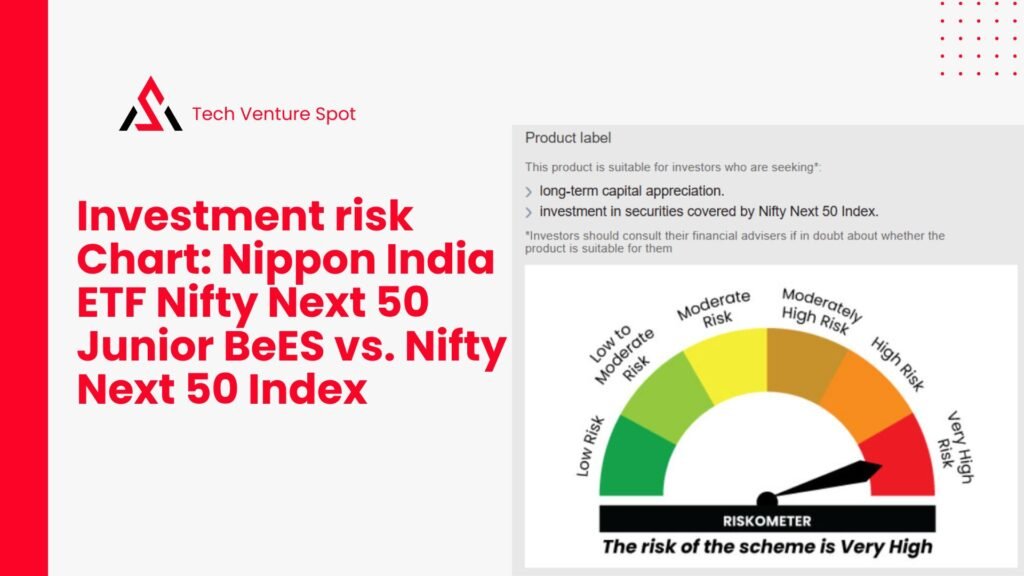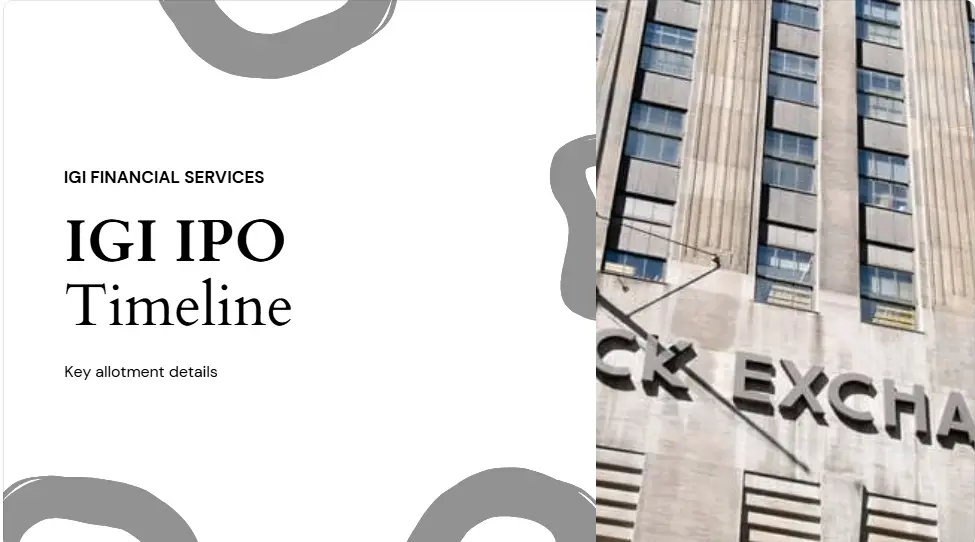Equity | SLB
₹718.20 ▲ 10.19 (1.44 %)As on 16-May-2025 16:00:00 IST (All price values in ₹)
Price & Key Metrics Snapshot
Latest data tracked for Nippon India ETF Nifty Next 50 Junior BeES (mid‑May 2025):
Current Market Price
~₹718.28
Day Range
₹701.35 – ₹729.25
52‑Week Range
₹595.00 – ₹830.00
Trading Volume
~740,000 shares/day
AUM (Assets Under Management)
~₹5,863 Cr
NAV (16 May 2025)
₹716.91
Expense Ratio
0.17%
Fund / Benchmark Performance
NAV as on April 30, 2025: ₹689.3294
Nippon India ETF Nifty Next 50 Junior BeES - Inception Date: Feb 21, 2003
| Fund / Benchmark (Value of ₹10,000 invested) | 1 Year | 3 Year | 5 Year | Since Inception | ||||
|---|---|---|---|---|---|---|---|---|
| Amount in ₹ | Returns (%) | Amount in ₹ | Returns (%) | Amount in ₹ | Returns (%) | Amount in ₹ | Returns (%) | |
| Nippon India ETF Nifty Next 50 Junior BeES | 9,996 | -0.04 | 15,393 | 15.43 | 27,440 | 22.36 | 5,00,482 | 19.27 |
| B:Nifty Next 50 TRI | 10,014 | 0.14 | 15,489 | 15.67 | 27,820 | 22.69 | 6,05,381 | 20.30 |
| AB:Nifty 50 TRI | 10,901 | 9.01 | 14,742 | 13.78 | 26,127 | 21.16 | 3,06,949 | 16.67 |
Performance Returns (%) Comparison Chart
Note: The chart above visualizes the 'Returns (%)' from the table. The fund's performance is compared against its primary benchmark (Nifty Next 50 TRI) and an additional benchmark (Nifty 50 TRI).
Scheme Performance Comparison (Other Nippon India Funds)
This table shows CAGR performance for various Nippon India schemes, including the FoF version of Nifty Next 50 Junior BeES. The main ETF (subject of this page) is not directly listed here but its FoF version is. Data as of April 30, 2025 for NAV based returns typically.
| Scheme | 1‑Year CAGR Regular | 1‑Year CAGR Direct | 1‑Year Benchmark | 3‑Year CAGR Regular | 3‑Year CAGR Direct | 3‑Year Benchmark | 5‑Year CAGR Regular | 5‑Year CAGR Direct | 5‑Year Benchmark |
|---|---|---|---|---|---|---|---|---|---|
| Top Performers | |||||||||
| Nippon India Gold Savings Fund | 29.45% | 29.73% | 31.31% | 20.41% | 20.68% | 21.65% | 12.77% | 13.06% | 14.95% |
| Nippon India ETF Nifty Bank BeES | 12.25% | – | 12.51% | 15.85% | – | 16.09% | 21.10% | – | 21.35% |
| Nippon India ETF BSE Sensex | 8.97% | – | 9.06% | 13.39% | – | 13.43% | 20.23% | – | 20.34% |
| Underperformers | |||||||||
| Nippon India Nifty Midcap 150 Index Fund | 4.76% | 5.29% | 5.73% | 20.67% | 21.31% | 21.80% | – | – | – |
| Nippon India Nifty Next 50 Junior BeES FoF | –0.55% | –0.38% | 0.14% | 14.92% | 15.16% | 15.67% | 21.97% | 22.26% | 22.69% |
| Nippon India Nifty Smallcap 250 Index Fund | –4.13% | –3.55% | –2.42% | 16.43% | 17.19% | 18.21% | – | – | – |
Note: "–" indicates data not available or not applicable (e.g., Direct plans for ETFs, or funds not existing for the full period).
ETF Performance Analysis
Fund Comparison
Detailed Metrics
Complete Comparison Table
| Fund Name | Expense Ratio | AUM | 3Y CAGR |
|---|---|---|---|
| Nippon India ETF | 0.17% | ₹5,863 Cr | 21.0% |
| ICICI Prudential | 0.10% | ₹1,415 Cr | 21.4% |
| Motilal Oswal | 0.32% | ₹100 Cr | 20.8% |
Nippon India ETF Nifty Next 50 Junior BeES Insights
Top Holdings & Sector Allocation
Knowing what’s under the hood matters. Here’s how Nippon India ETF Nifty Next 50 Junior BeES spreads its bets:
Top 5 Stocks (approx. weights):
| Stock | Weight (%) |
|---|
Sector Mix:
This balanced allocation captures cyclical growth (like airlines) and defensive themes (like pharma), which I find comforting when markets swing.
The Core Growth Sleeve: How to Use the Nippon India ETF Nifty Next 50 Junior BeES in Your Portfolio
For mid-cap exposure, I consider the Nippon India ETF Nifty Next 50 Junior BeES to be a fundamental position. For well-rounded coverage, it works in tandem with a Nifty 50 ETF.
SIP for Average Rupee Cost:
Create a monthly SIP regardless of market conditions. Every month on the first, I automate ₹2,000 to reduce volatility.
Tactical Overweights:
You can temporarily overweight this ETF when you think mid-caps are particularly appealing, such as during periods of economic resurgence.
My honest opinion on the pros and cons
Pros:
- The little fee (0.17%) keeps compounding on your end.
- Openness—you are aware of the complete portfolio.
- With thousands of deals every day, liquidity allows you to go in and out with ease.
- Having a single ticker gives you broad mid-cap exposure.
Cons:
- Equity Risk: You are completely exposed to changes in the market, therefore there are no surprises here.
- Concentration Risk: Since roughly 30% of assets are made up of the top 10 equities, significant changes in a business like HAL or IGL can affect results.
- Tracking Error: Although historically rare, slight deviations from the index are possible.
FAQs Concerning the Nippon India ETF Junior BeES for the Nifty Next 50
Is this ETF allowed in my PPF or EPF account?
A: No, you need a Demat and trading account because this is an exchange-traded product.
What is the frequency of the ETF's rebalancing?
A: It keeps your portfolio in line with the changing next-50 universe by adhering to the semi-annual rebalancing of the Nifty Next 50 Index.
What occurs if a stock enters the Nifty 50?
A: At the subsequent rebalance, it leaves Junior BeES and is replaced by the new 51st stock, maintaining the theme.
In conclusion, are you a good fit for the Nippon India ETF Nifty Next 50 Junior BeES?
Finally, if you want to ride India's mid-cap trend without any hassles, it's hard to overlook the Nippon India ETF Nifty Next 50 Junior BeES. It finds the ideal balance between price, variety, and usability.
I'm not a financial advisor, so of course you should follow your goals and risk tolerance.








Pingback: How to Invest in China Stock Market from India
Pingback: BHARAT 22 ETF Companies Weightage & Stock List 2025